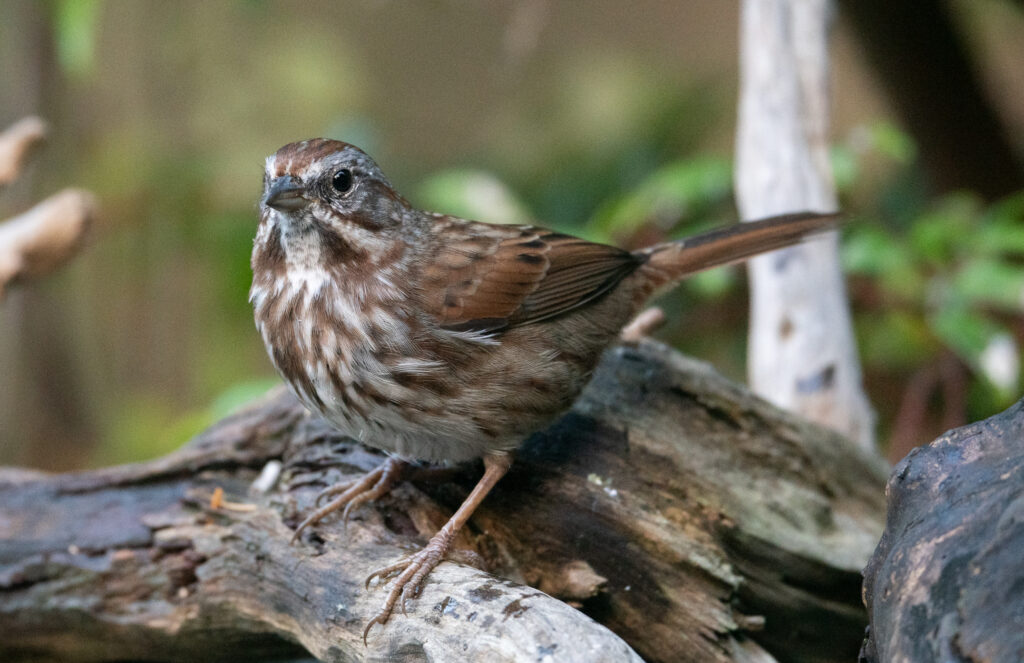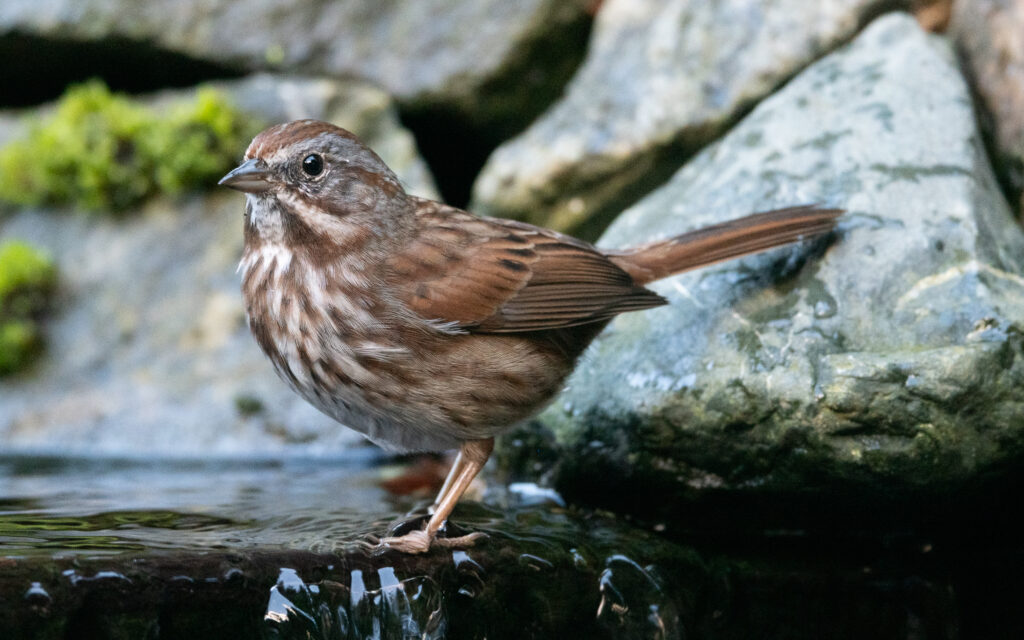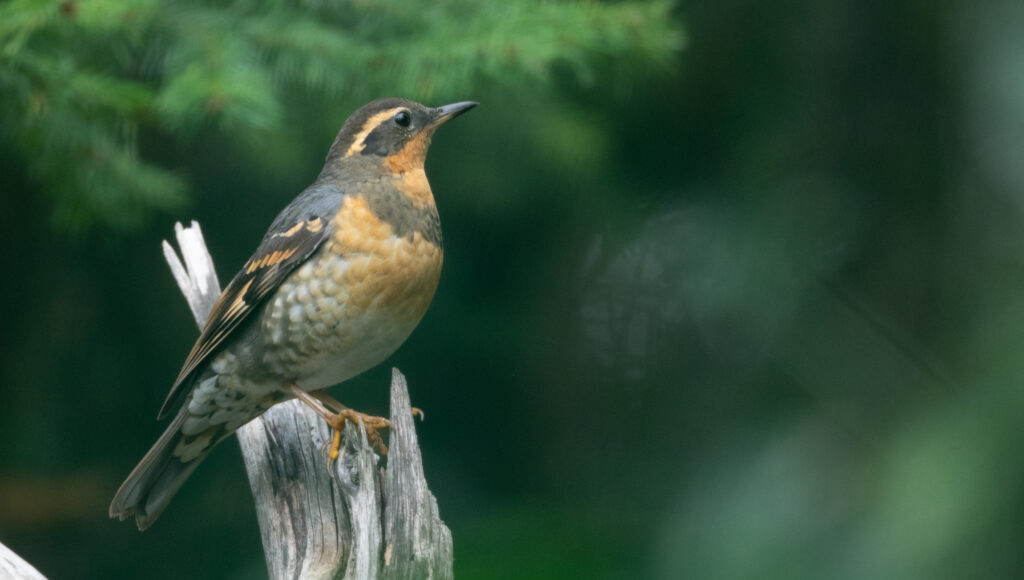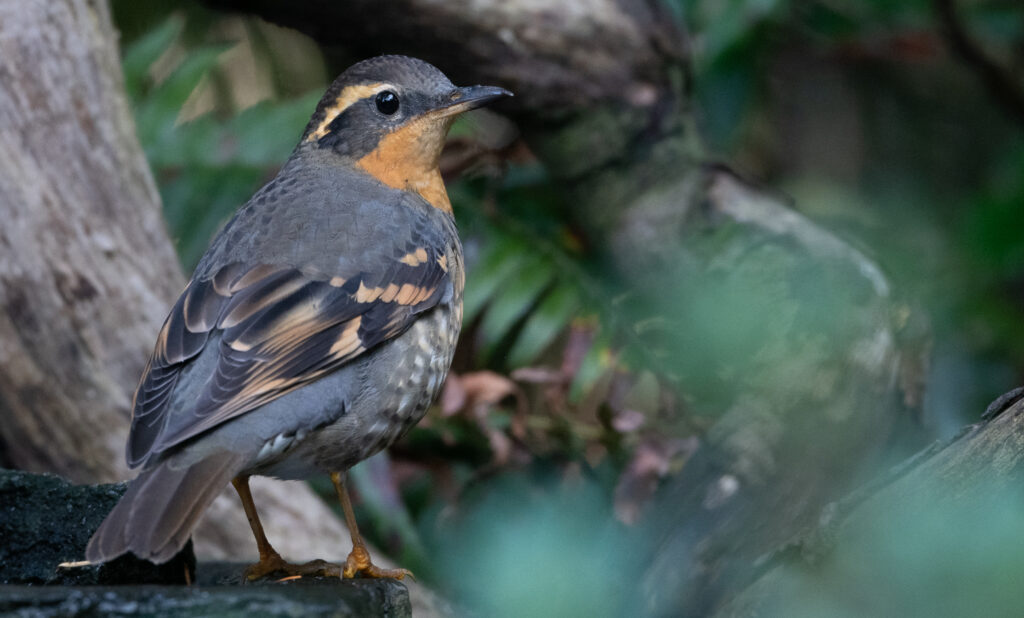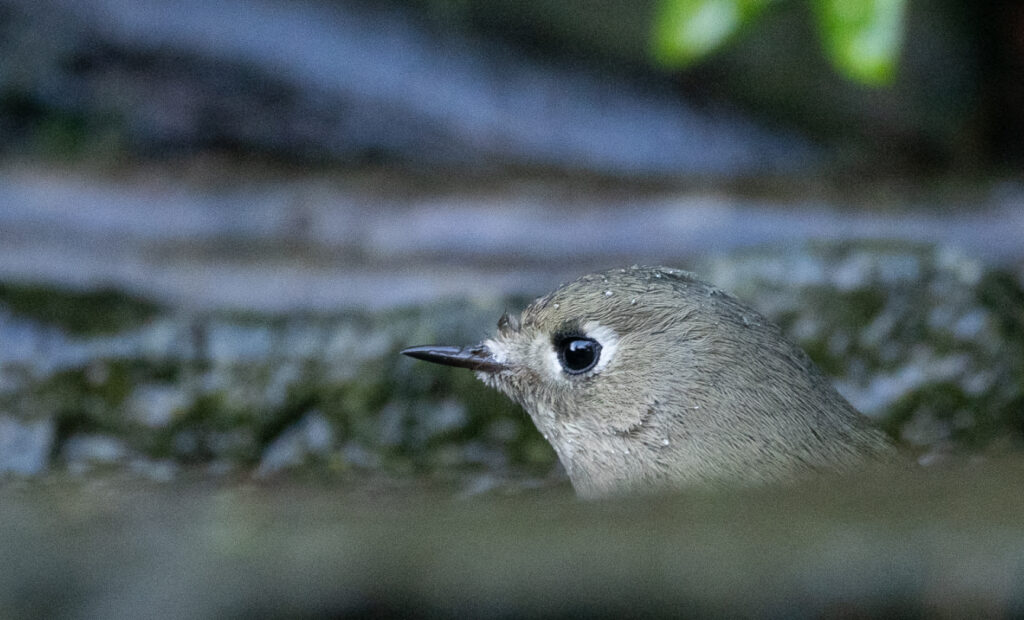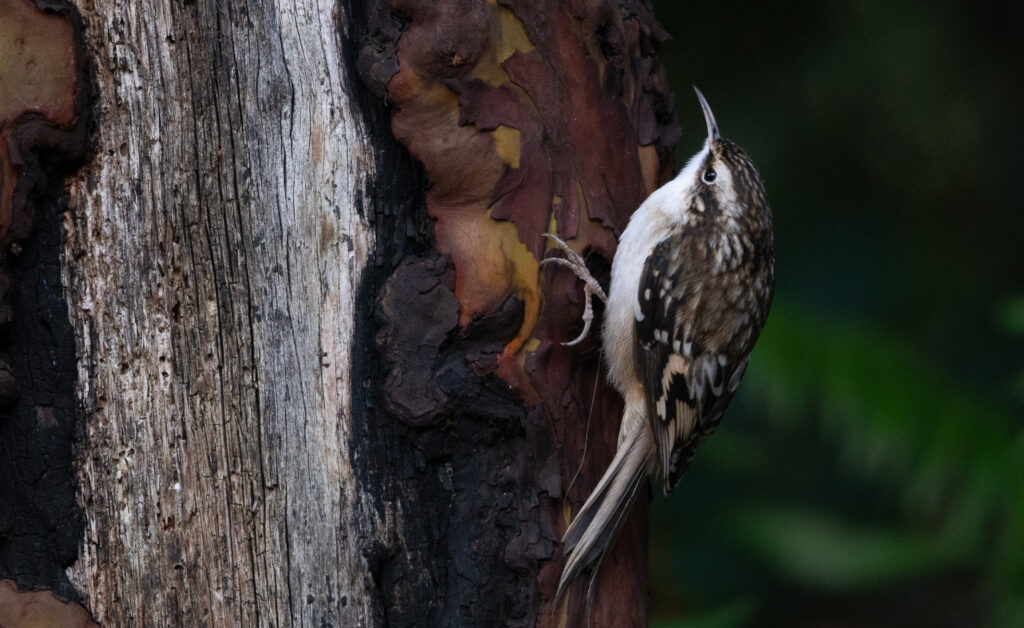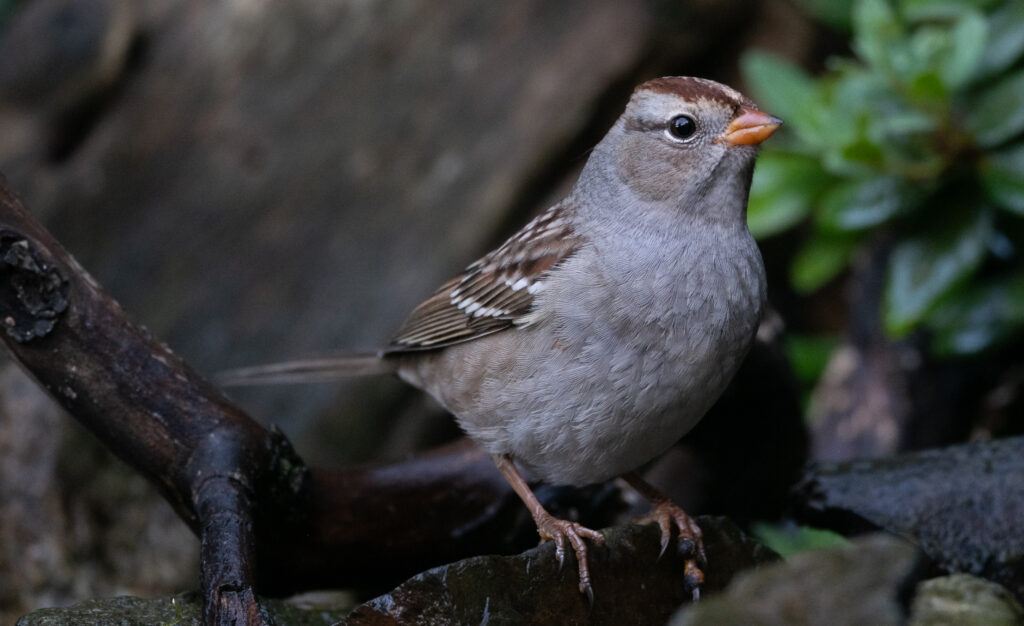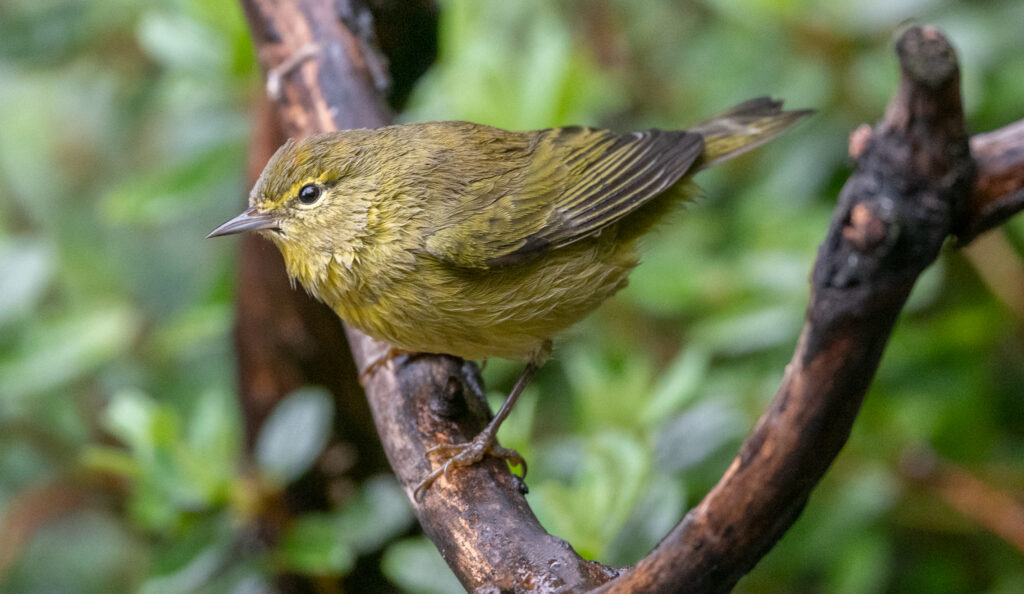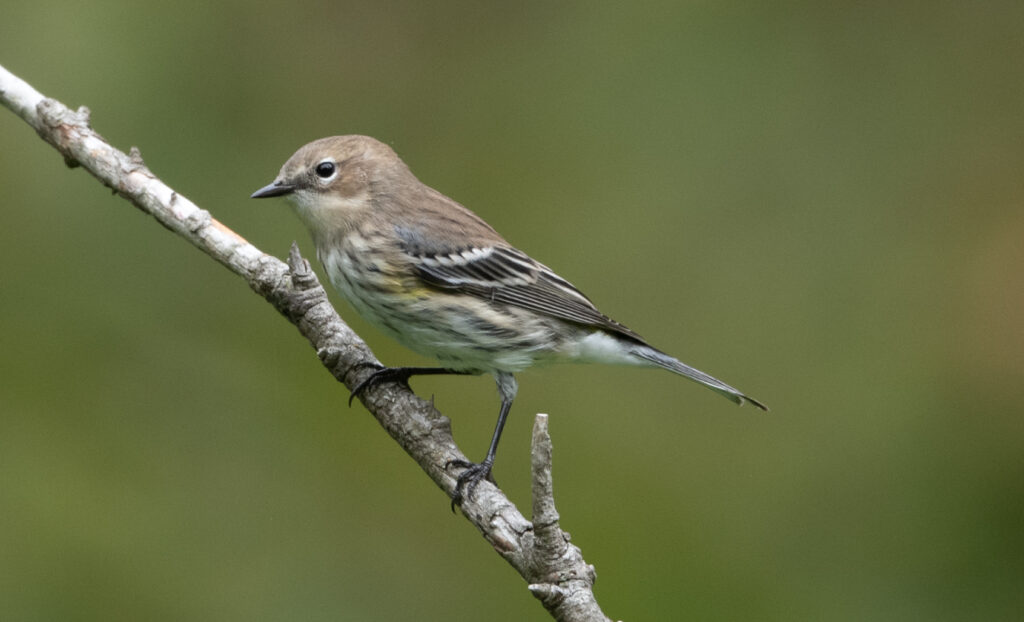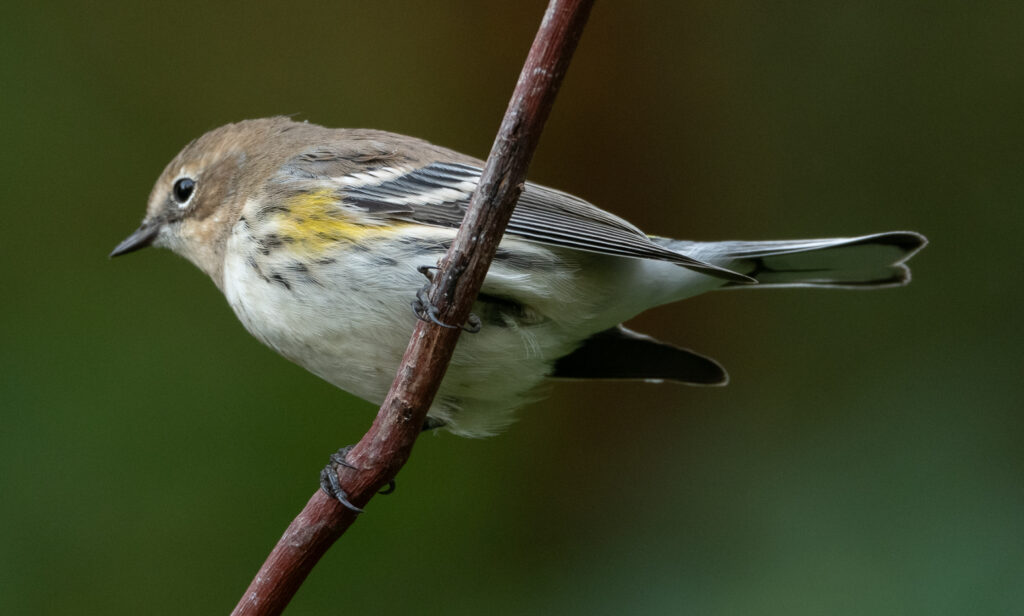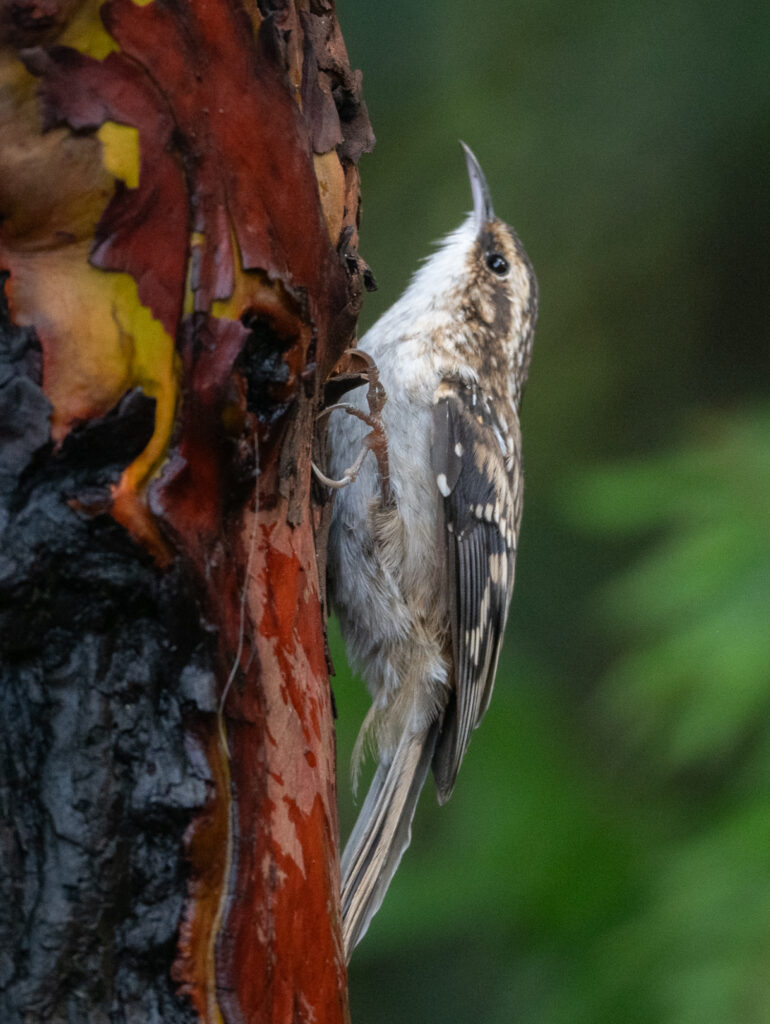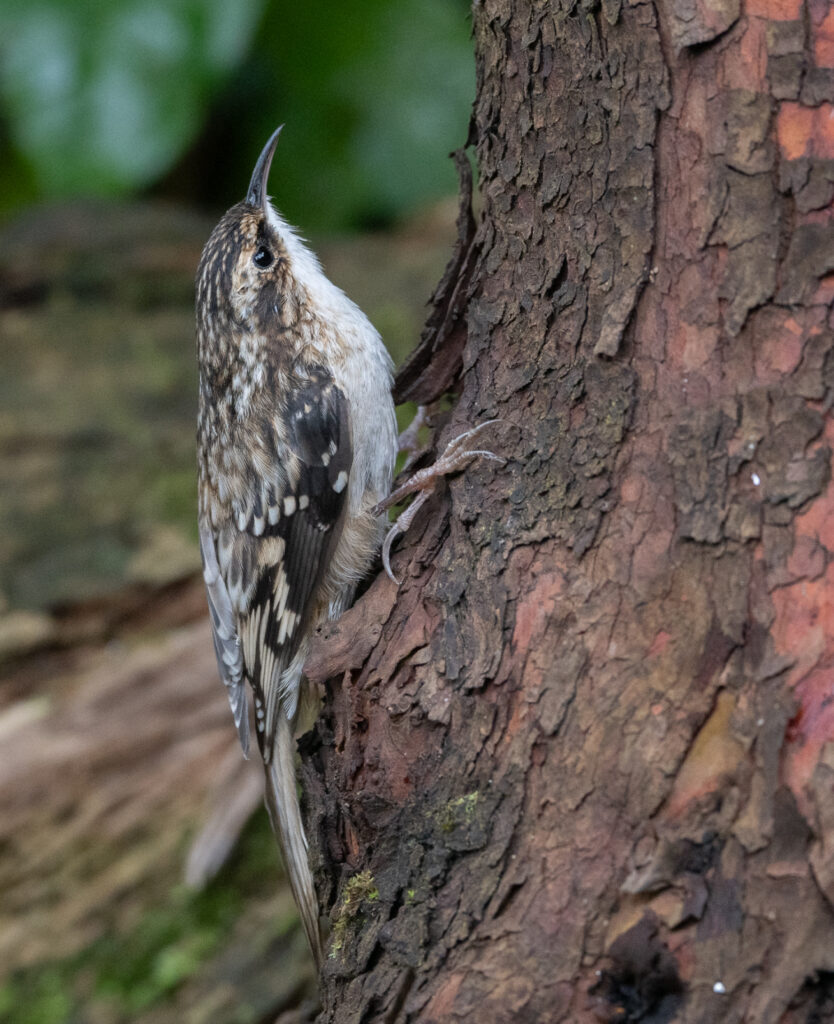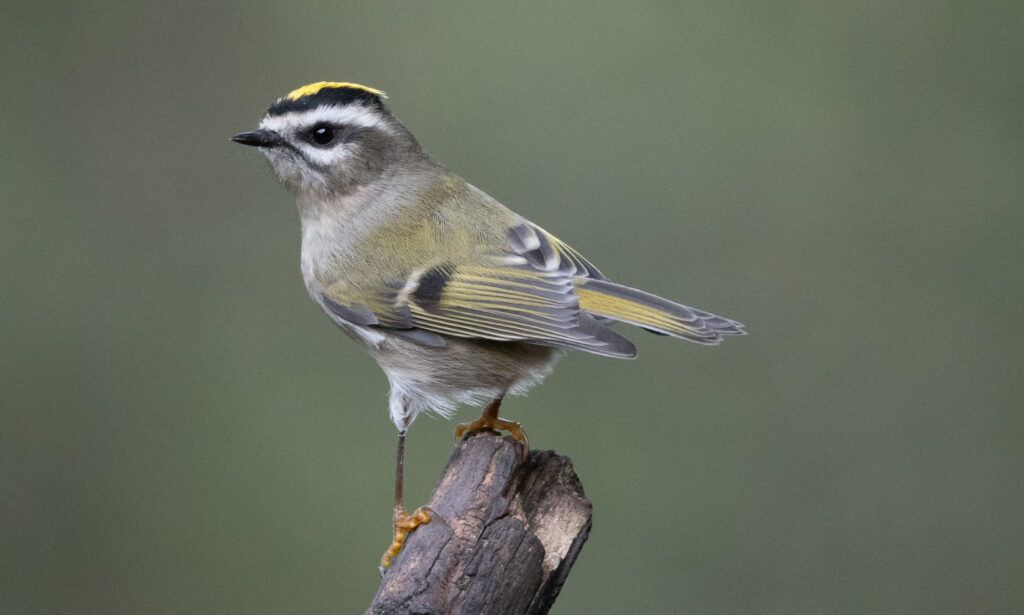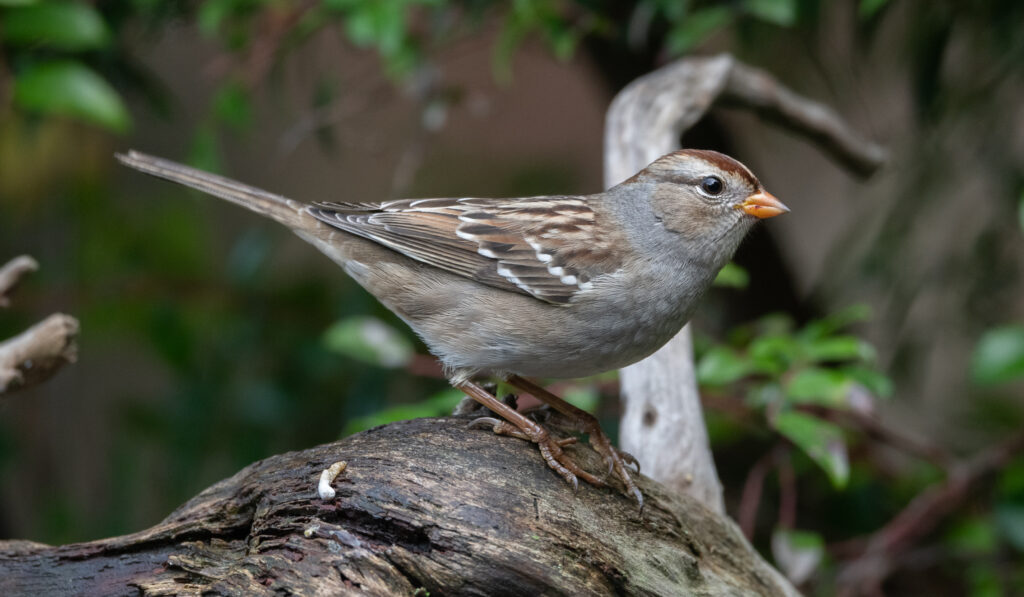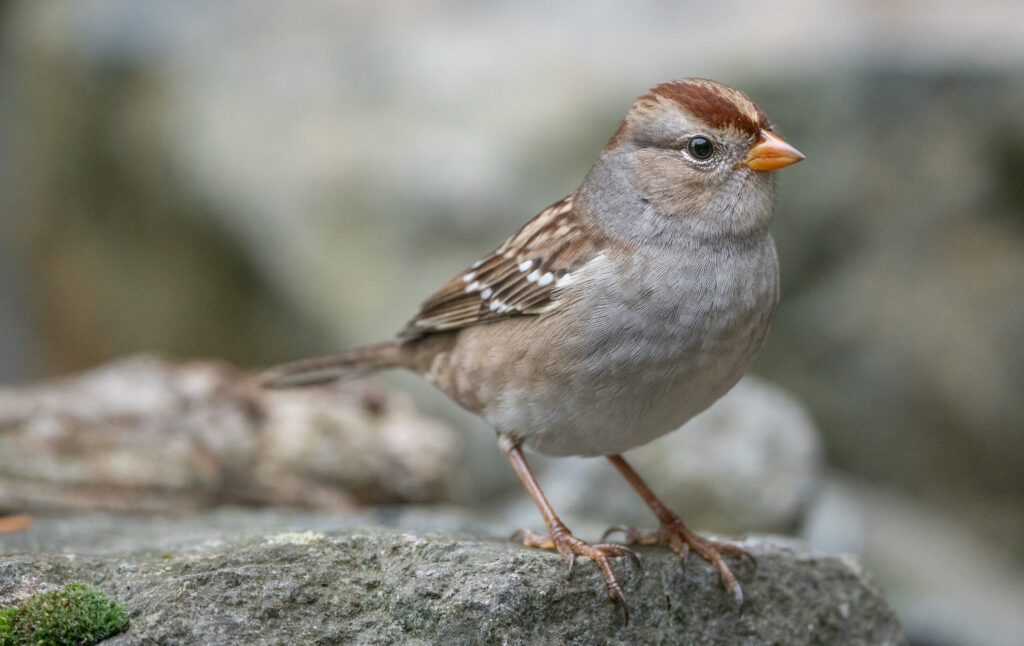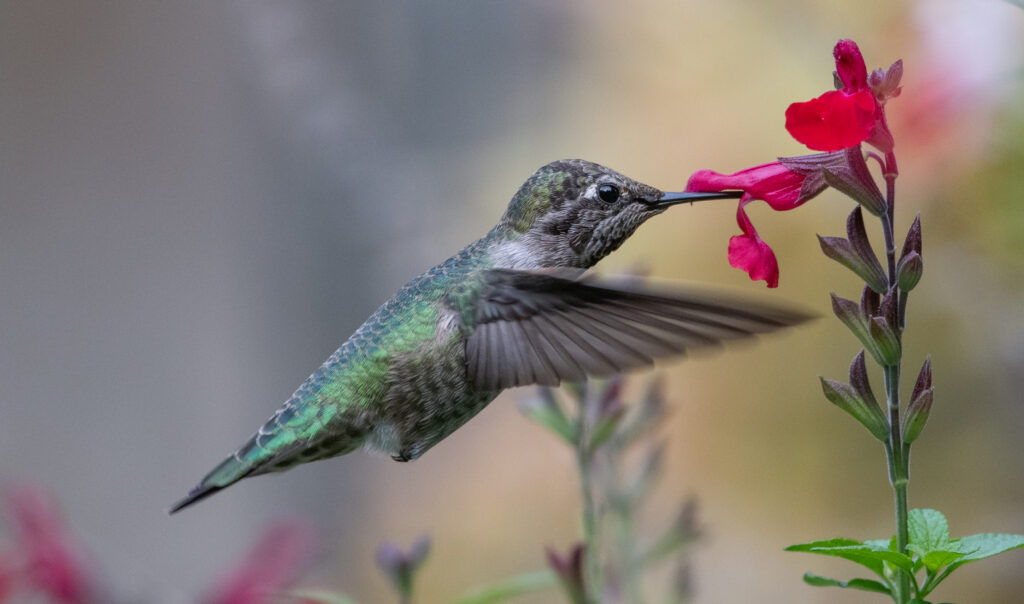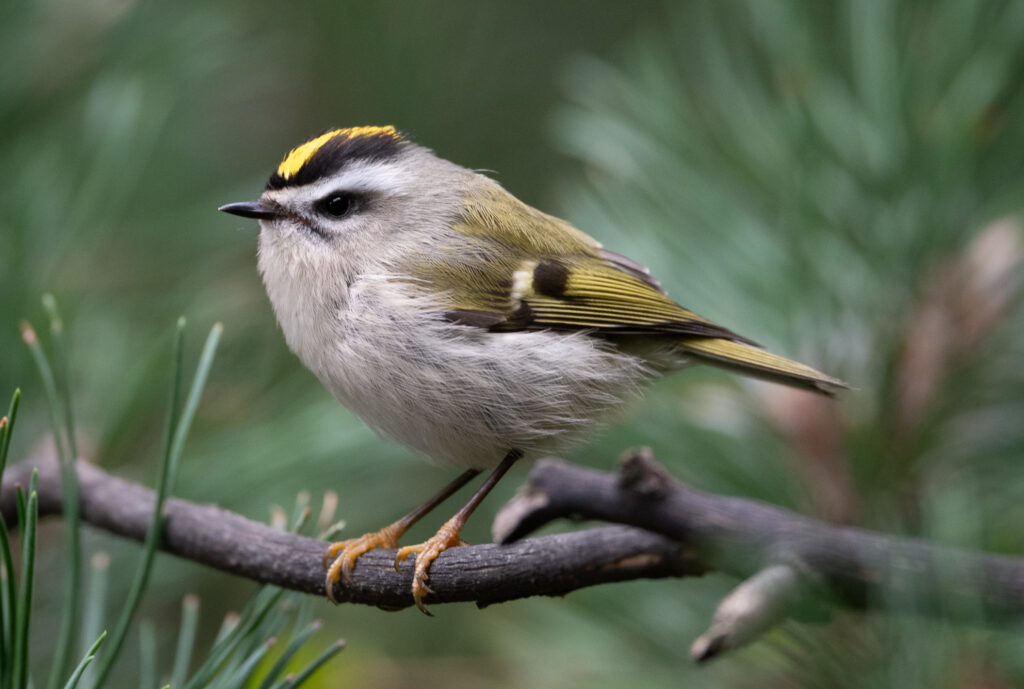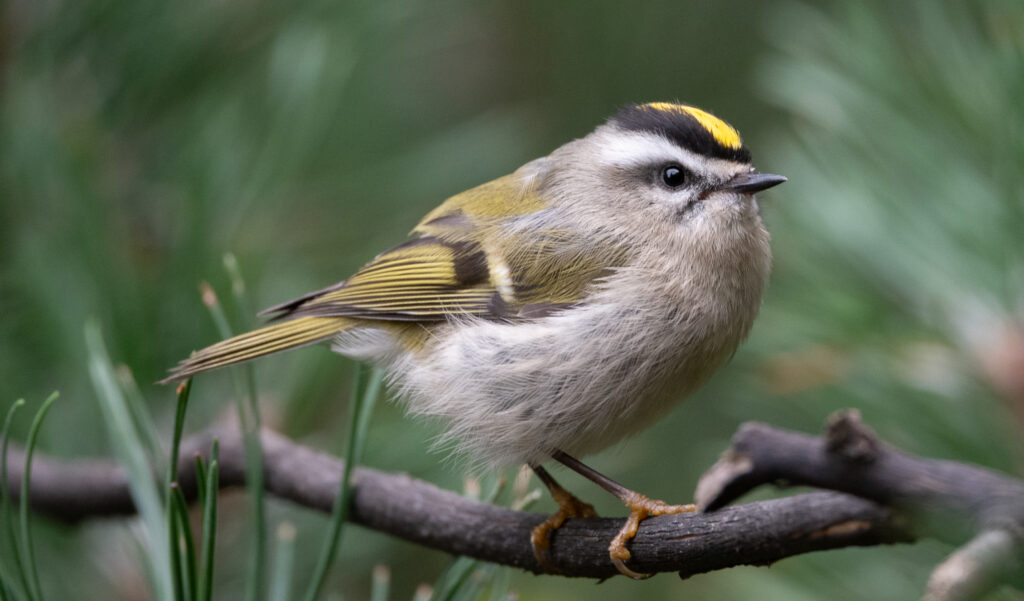On November 7, 2024, I managed to eke out a little time for birding, something I hadn’t had time to do for almost a week due to other activities and weather.
My afternoon began rather slowly with much the same birds in the yard although things seemed a little slower than normal. I had visits from both male and female Anna’s hummingbirds who will apparently remain with us for the winter. I didn’t have to wait too long for a visit from a Golden-crowned kinglet, and there was a very brief visit from a Brown creeper. Golden-crowned sparrows seem to come and go but don’t seem to be in open areas as much, perhaps for good reason!
After a while a Pacific wren emerged from behind my stone birdbath. This is a very small active bird that frequents low areas with brush and ferns and is very difficult to photograph. The wren disappeared for a minute or two and then reappeared at a much nearer birdbath and gave me the opportunity for many photographs. Unfortunately, the location in the birdbath where it chose to bathe was exactly behind a single fir needle sticking up at the edge of the bird bath, which ruined many of my photos. However, I was afforded many photographs of the bird and may have gotten some of my best photos of this species.

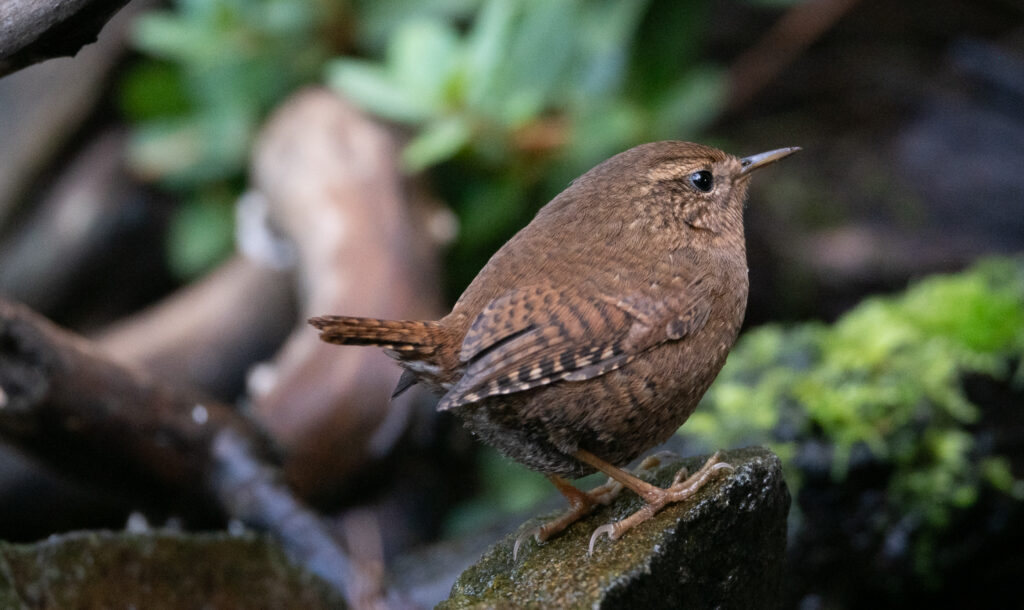
As I saw watching the birds in the yard, I was aware of the sudden appearance of an adult accipiter (probably a Cooper’s hawk) on the top of my garden fence. I watched as it made its way through fir trees to a large patch of Snowberry bushes. I was hoping to get a good view of the bird for a photo when it popped out onto a perch directly above my stone birdbath. At that point, I was able to take a good many photographs of the bird and noted that it was banded.

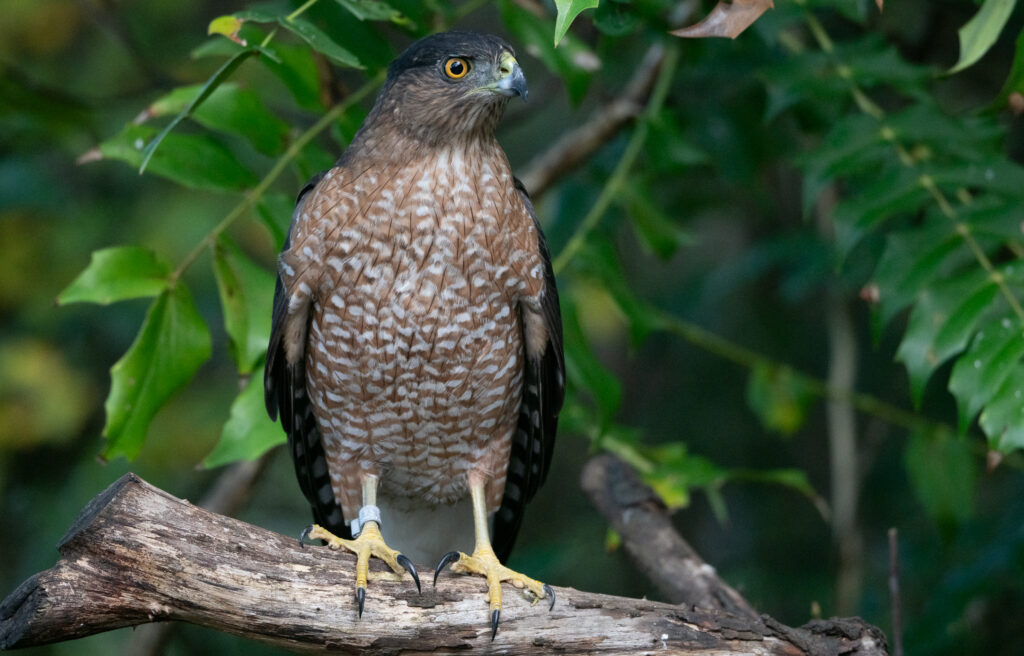
I have the name of a person in Seattle who bands raptors and I plan to contact him to see if he can give me any information on the bird. Many years previously I was able to obtain rather extensive information on a young Cooper’s Hawk that had been banded in the nest in Seattle, fledged and showed up at SeaTac airport, was trapped and removed and was relocated to the Samish Flats area before making its way to my yard!
Just to fill things out, here are a couple of Song sparrow images…
